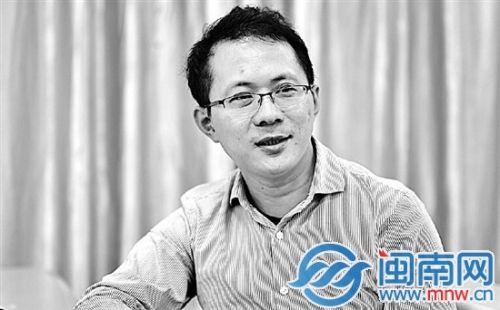 黎明大学外语外贸与旅游学院副教授王强 泉州得名的历史渊源 《THE CITY OF SPRINGS》,一些媒体将其译为“春天之城”,但王强认为,应该译为泉水之城或者泉州。 泉州因何得名?泉州市方志委副主任许晓松给出了解释。“泉州的主山是清源山,因有泉水从山上源源流出,故名‘清源’,亦名‘泉山’,泉州以山得名。”他还表示,在隋朝,今天的福州也叫泉州,到了唐朝才把泉州之名移到闽南。到南唐,泉州改为清源军,北宋初又改称“平海军”。到北宋太平兴国三年,“平海军”又复称泉州,元朝沿袭旧名,明朝设泉州府,沿称至今。 □翻译(节选自王强译文) The great city lies between fifty and sixty miles in a north-easterly direction from Amoy, yet to reach it two days are usually required.The first day’s journey is by junk (or latterly by steam launch) and takes us as far as An-hai. The remaining twenty miles of land journey are covered next day in six to seven hours by sedan chair. 这座伟大的城市位于厦门东北方向约50至60英里间,通常需要两天的路程。第一天是搭帆船(或近来采用的汽艇)载我们到安海。剩下的20英里陆路要坐6~7个小时的轿子。 We cross the Chinchew River by a long,high bridge made of lengths of granite, resting on solid piers of the same. Its very open stone fence, adorned at intervals with grotesquely carved lions’heads, forms a rather inadequate-looking balustrade. 穿越泉州晋江上长长的花岗岩石桥,桥建在码头,两者都很坚固的样子。桥上开放式的石栏,间隔装饰表情怪异的石雕狮子,栏杆不是那么好看。 A good many small junks,laden with lime,wood,etc.,are coming down;while others,carrying salt, and various city-anufactured articles, are preparing for the more arduous up-stream journey. There are larger vessels,too,-fishing-boats from the coast, sea-going passenger-junks, and, farther down the river, large rice-junks. 好多小帆船,满载着石灰、木材等,顺流而下;而另一些船,载着盐和各种城市制品,正在准备更加艰巨地逆流而上。也有较大的船只,从沿海而来的渔船,远洋客运帆船,载大米的比较大的帆船顺流而下。 |


26ced723-83e9-46aa-9f33-327164fab257.jpg)
ad225828-ca44-43e5-b164-ca05e8240780.jpg)
4f694c33-95e8-434b-92fb-891b7ea414ca.JPG)
9fa5ab24-96ad-4bb9-afa1-7baf0d5f4bab.JPG)
144599ac-8b02-47a7-bfba-6e7ebed1b6ac.jpg)
f90847a7-4082-4d82-aaf2-f13a9be8833b.jpg)
503aaa43-de5b-4c91-a021-5930456c01f7.jpg)
6bb0a223-ab7a-46bd-878c-1bcbaa65b93c.jpg)
9142e13d-f110-4f89-9994-038f903b6e6a.jpg)
563b4d9f-4524-48d8-828e-38a8f3672ed5.jpg)
58a3e600-b0a9-40a3-a09f-e56b265c9a64.JPG)
518a10a8-01b8-44b8-9ab7-5714f9ab0b16.jpg)